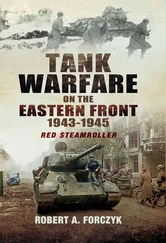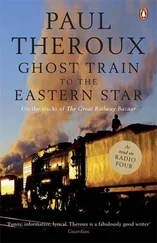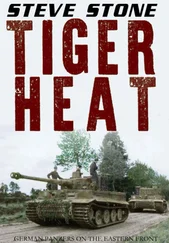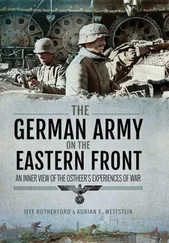Unlike Stalin, Hitler was unwilling to push excessive rearmament measures because he believed that his political legitimacy rested upon ensuring German economic recovery. Hitler wanted rearmament, but he wanted it on the cheap, so as not to place an undue burden on Germany’s civilians. Armament factories thus continued to work single shifts and production output remained anemic. Amazingly, Hitler did not prioritize tank production before the invasion of the Soviet Union in June 1941 and allowed the manufacturing base to operate by peacetime standards even in the second year of the war.
Consequently, German industry was not pushed and bullied along as Soviet industry was to quickly develop large numbers of new tanks. The cost of new tanks – not an issue in the Soviet Union – was an important one in a Germany that was still recovering from the Depression. Expensive luxuries, like heavy tanks, were deferred. Even developing a reliable medium tank proved to be a much greater challenge for German industry than it was for Soviet industry. While the Wehrmacht leadership wanted tanks that possessed sufficient firepower and mobility to execute the kind of mechanized warfare envisioned by Reichswehr doctrine of the late 1920s, they were initially forced to accept panzer divisions based mostly upon the Pz.I and Pz.II light tanks, and later ex-Czech Pz.35(t) and Pz.38(t) tanks. The Wehrmacht was slow to develop technical requirements for a new medium tank and ending up asking for two tanks: the Pz.III was intended to be the primary tank of the panzer divisions, with its high-velocity 3.7cm gun optimized for the anti-tank role, while the Pz.IV was intended as an infantry support tank, with its 7.5cm low-velocity howitzer.
Both these programs proceeded at a snail’s pace and whereas the Soviets were already demonstrating the ability to move from prototype to mass production in two years, both the Pz.III and Pz.IV programs required five years before they were ready for series production. Nor were German tank designs made with much regard to suitability for mass production, and fabrication was inefficiently spread across eight different firms. Due to a habit of continually introducing upgraded models, production output remained low. Even at the start of Operation Barbarossa, the production of Pz.III and Pz.IV medium tanks was still insufficient to even properly equip all the existing panzer divisions, never mind replace combat losses. Due to these design and production choices, the Third Reich’s panzers were usually outnumbered by their Soviet opponents and their limited ability to replace tank losses shaped how German commanders employed their panzers.
The Pz.III and Pz.IV were both tentative and very conservative designs, and as it turned out, not terribly innovative. The main armament of the Pz.III was based on the existing 3.7cm Pak gun and eventually upgraded to the short-barreled 5cm KwK 38 L/42 in August 1940, which Hitler believed – rightly – was inadequate. He directed that a long-barreled 5cm gun be developed for the Pz.III, but the Heereswaffenamt (Army Weapons Department) failed to take any action on this. A tank is essentially based around its engine and both the Pz.III and Pz.IV were limited by their reliance on the 300hp Maybach HL120TR engine. Due to its low power output, German designers were forced to limit their medium tanks to the 19–22-ton range, which reduced the amount of armour and armament that the vehicles could carry. Reliance on a gasoline-powered engine also meant that fuel economy would be unsatisfactory, which would continue to haunt panzer leaders throughout the Second World War. Hitler expressed interest in developing a diesel tank engine – which he recognized offered savings in fuel and improved range – but German engineers fobbed off such ideas as ‘too difficult and too time consuming,’ so it was allowed to slide. If any word describes the state of German tank design at the start of Barbarossa, it is mediocrity. Furthermore, German tanks became less mobile after 1941, not more mobile, as weight was increased due to additional armour and heavier weapons. Indeed, during the entire period of the Third Reich, German industry never designed a tank specifically for long-distance mobile operations.
Most German officers believed that destroying enemy tanks was incidental to the primary missions of tanks and their preferred doctrinal and technical solution was to use small, easily-concealed anti-tank guns to ambush enemy tanks. High-velocity anti-tank guns such as the German 3.7cm Pak could penetrate 30–40mm of armour at ranges up to 500 meters, which was considered adequate to defeat most medium tanks. Given their small size, anti-tank guns were very likely to get the first shots off in an engagement, which suggested that they could achieve a very favorable kill-loss ratio on the battlefield. Even if enemy tanks won, it was easier to replace an anti-tank gun than an expensive tank. Yet mounting high-velocity guns on tanks such as the Pz.III detracted from their primary mission, since armour-piercing shells were not very useful in a breakthrough battle and were poorly suited to engaging the main threat – enemy anti-tank guns. Furthermore, tank versus tank combat was generally avoided throughout the early years of the Second World War, since it risked heavy losses even for the victor. At the Battle of Hannut in Belgium on 12–14 May 1940, the 3. and 4.Panzer-Divisionen tanks suffered 25 per cent losses in three days of combat with French tanks. Given the limited capacity of German industry to replace tank losses in 1940–41, the Germans had little enthusiasm for attrition-style tank combat. Consequently, the Germans assigned the primary anti-tank mission to their panzerjäger troops in order for the panzers to specialize in the breakthrough and exploitation missions. The development of German kampfgruppen tactics was based on this idea of combat specialization, with tanks forming only part of a combined arms team that also included motorized infantry, engineers, self-propelled artillery, panzerjägers, light flak and signals troops. German doctrine viewed the tank as a weapon system that acted as a ‘combat multiplier’ in the combined arms team, but dependent upon other branches for external support – including Luftwaffe close air support – to offset its limitations.
Unlike German tankers, Soviet tankers believed from their combat experience in Spain that tank versus tank combat was increasingly likely and they wanted tanks that could prevail in these conditions. General Dmitri Pavlov, who commanded a tank brigade during the Spanish Civil War in 1936–7, used his combat experience to shape Soviet tank doctrine as well as tank development in his next assignment as head of the ABTU. [10]
Pavlov knew that in order to prevail in tank versus tank combat, Soviet tanks needed better firepower and better armoured protection. Soviet intelligence learned that the Germans were developing a 5cm anti-tank gun and fully expected them to deploy a high-velocity 7.5cm tank gun in the near future. The obvious solution, which Pavlov recommended, was to develop a new generation of dual-purpose medium-caliber guns that could fire both armour-piercing and high-explosive rounds. With ABTU’s support, engineers on the Kirov Plant’s SKB-4 team in Leningrad began developing the 76.2mm L-11 tank gun, which began testing in 1938, while Vasily G. Grabin’s artillery design bureau in Gorky would be ready to begin testing its own 76.2mm F-32 gun in late 1939. Pavlov wanted whichever of these weapons proved itself superior in testing to be installed on the next generation of Soviet tanks. Pavlov also viewed the German 3.7cm Pak gun as a game-changer, since it made the T-26 and BT-series light tanks obsolete, so he pressed for the development of a ‘shell-proof’ medium tank that could withstand anti-tank fire from 5cm guns. He also lent his support to the development of Chelpan’s 500hp V-2 diesel tank engine, which began testing in April 1938. Pavlov recommended that the new T-34 medium tank and KV-1 heavy tank under development should utilize sloped armour, the brand-new V-2 diesel engine and the L-11 gun in order to gain a significant advantage over Germany’s first medium tank, the Pz.III. Although the KV-1 design was too advanced to incorporate sloped armour, the T-34 received the full benefit of the latest advances in Soviet tank technology. Thus, during the winter of 1940–41 the Red Army was receiving tanks that incorporated revolutionary design features and was gearing up for mass production, while the Wehrmacht was content to rely upon conservatively-designed tanks that were built in totally inadequate quantities.
Читать дальше







![John Stieber - Against the Odds - Survival on the Russian Front 1944-1945 [2nd Edition]](/books/405234/john-stieber-against-the-odds-survival-on-the-russian-front-1944-1945-2nd-edition-thumb.webp)




